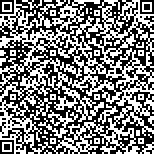下载中心
优秀审稿专家
优秀论文
相关链接
首页 > , Vol. , Issue () : -
摘要

“数字孪生”概念的提出为人群行为研究提供了新思路,本文提出了数字孪生人群行为实验理论框架,从基本理论、基本原则等方面进行总结,包括地理认知理论、相似性理论、尺度理论、复杂性问题理论和地理智能模拟原理,以及实验相似性、协同和异构、规范化和标准化原则,并进一步提出数字孪生人群疏散实验研究内容及分类。根据该理论框架开展基于VR的群组疏散孪生实验,并根据实验数据定性和定量分析群组空间结构特征和疏散行为特征。结果表明,群组成员在孪生疏散过程中呈现出V型和“side by side”结构,在扶梯这类特殊区域中群组的空间结构有较大的变动,疏散个体面向方向与其他群组成员间的夹角小于60°,并且群组成员间的较小间距和信息扩散交互可以大大提高疏散效率。此外,分析孪生场景中的疏散轨迹和眼动轨迹得出疏散人群在柱子、出口、换乘通道等位置与环境交互较多,表明疏散人群在这些位置期望得到环境信息的需求较大。本文的孪生实验结果能够发现地铁站内的疏散瓶颈区域和群组行为规律,为地铁站内的布局规划和应急预案提供优化建议。
The concepts of "digital twin" and "meta-universe" provide new ideas for the field of crowd behavior simulation. Using digital twin methods to conduct crowd behavior experiments to obtain data, and then conducting researching on human spatial and temporal behavior in specific scenarios, has become an important direction in the field of crowd simulation and indoor GIS research. Digital twin crowd behavior experiment is an innovative geographical experiment to explore crowd behavior, geographical phenomena and processes, and human-geography relationship in real geographical environment. This paper proposes a theoretical framework for conducting digital twin experiments on crowd behavior from experimental purpose, experimental object, experimental process, experimental evaluation, as well as experimental results and analysis. The framework summarizes the basic theories and principles, including geographic cognitive theory, similarity theory, scale theory, complexity problem theory, and geographic intelligence simulation theory. We also summarize the experimental principles of digital twin crowd behavior, such as It also includes principles of experimental similarity, collaboration and heterogeneity, standardization and normalization. Furthermore, we propose the content and classification of experiments on digital twin crowd evacuation. Based on this theoretical framework, a VR-based social group evacuation digital twin experiment is conducted in the Olympic Park Station. The spatial structure and evacuation behavior of social groups are qualitatively and quantitatively analyzed using experimental data. We analyze the spatial structure characteristics of two members’ social groups and three members’ social groups, the characteristics of the angle and distance between social group members, the information diffusion way within social group members, the evacuation trajectories and eye tracking points’ trajectories of social groups. The results show that during the evacuation process, social group members exhibit V and "side by side" structures. They still maintain a compact spatial structure in an emergency, indicating that group members have the desire to find a safe exit together, and this willingness has an important impact on crowd evacuation behavior. While in some special areas such as stairs and escalators, the spatial structures of social groups have significant changes. They show a tendency to improve the walking speed through these areas as soon as possible rather than to maintain the compact spatial structures. Moreover, evacuees tend to face a direction with an angle less than 60° relative to other social group membersthe angle between an evacuee’s facing direction and other social group members is less than 60°, and smaller distances and information diffusion interactions among social group members significantly improve evacuation efficiency. In addition, analyzing the evacuation trajectories and eye tracking points’ trajectories in the digital twin scenario reveals that the evacuating crowd interacts more with the pillars, exits, and transfer channels, indicating a greater need for direction information in these areas. Optimizing evacuation sign system in these key areas can greatly improve evacuation efficiency. The above findings of crowd behavior are of great significance to crowd behavior modeling, and the digital twin experiment results can identify bottleneck areas in the subway station selected in this paper, providing optimization suggestions for layout designing and emergency plans. The ability of subway station managers to predict and respond to emergencies can be further strengthened. The results of this study has important practical application value to reduce personal and property losses in disaster events.

